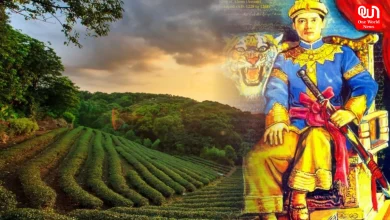Facts about Kopi Luwak, the world’s most expensive coffee

The World’s Most Expensive Coffee: Kopi Luwak
Are you someone who loves to explore new things? Do you get amazed by hatke things, then you are on the right page today. Here are a few amazing facts about Kopi Luwak, the World’s most expensive coffee.
We all love coffee. For some, it is even addiction without which, they can’t even start their day and talking about the benefits received from it which cannot be left unnoticeable. There are different types of coffee like cappuccino, espresso, latte, long black, flat white and many more and all of them have their unique cost of production.
But what’s new in the article that you are going to read about is ‘Kopi Luwak’, the world’s most expensive coffee. Be it anything, the cost of it is decided on the basis of expenditure occurred while producing it. Similarly, the reason behind the coffee being so high priced is its uncommon production. The other names for the coffee are ‘cat pooped coffee’ or ‘civet cat coffee’. By these names itself, you must have guessed some weirdness behind the coffee as it is produced from the coffee beans digested by certain Indonesian cat-like animal known as Palm Civet or Civet Cat.
India has never been left behind in anything. As we know India is the third largest producer and exporter of coffee, but the fact with which we were unaware is that it also produces ‘Cat pooped coffee’, although on a very small scale in Coorg District of Karnataka.
The coffee produced in India is available at the cost of Rs 8,000 per kg while it’s available at Rs 20,000-25,000 per kg at overseas. Now, let us get some more details about it.
Read more: Did you know coffee can reduce the risk of Type 2 Diabetes?

What’s Peculiar about the Coffee?
- Till now you must have understood the reason behind the cost of coffee, i.e. the way it is produced. Let’s take a look at how a simple coffee bean is turned into Kopi Luwak.
- The coffee tree known as Coffea is a flowering evergreen plant native to tropical Africa and Asia.
- The coffee beans from the tree are actually the seeds and not beans which contain caffeine, which is no protection against the civet cats.
- Palm Civets or Civet Cats belong to Vivverridae family and are small species. They eat the ripest cherries from the tree.In Indonesia, this animal is known as ‘Luwak’.
- While the food is being digested in Civet cats, cherries and pulp are removed but coffee beans are unable to digest. During this process, there is some kind of fermentation that occurs and gives the coffee its unique taste.
- After 24 hours, the coffee beans are defecated by the cats, which are then collected by the farmers and are processed into coffee.
- The next thing done with them is that they are washed, dried, pounded to remove the skin.
- Finally, the Kopi Luwak is ready! You should avoid mixing the coffee with sugar, milk or cream to get its great taste for which it is unique and expensive.
Insights of Coffee production
The problem of demand and supply is one of the greatest problems faced by the markets for a long time. The same happened in this case too. Due to the high demand and slow production process, farmers started caging civet cats, which in return increased the speed of production. But the question is, are the beans produced by caged civet cats has same uniqueness?
The answer is No. When the cats are caged they are only provided with the coffee cherries and nothing else and they do not even have to find the ripened cherries from the bush but only from the bowl in which they are provided in. The only work left with them is eating and defecating.
Few major problems are, they are overfed with unripe cherries which gradually result in their death and secondly, farmers are not well educated of how to take care of their animals.
On the other hand, wild civet cats eat the most ripped cherries from the trees which result in the production of the most unique flavours of coffee.
Have a news story, an interesting write-up or simply a suggestion? Write to us at info@oneworldnews.in







